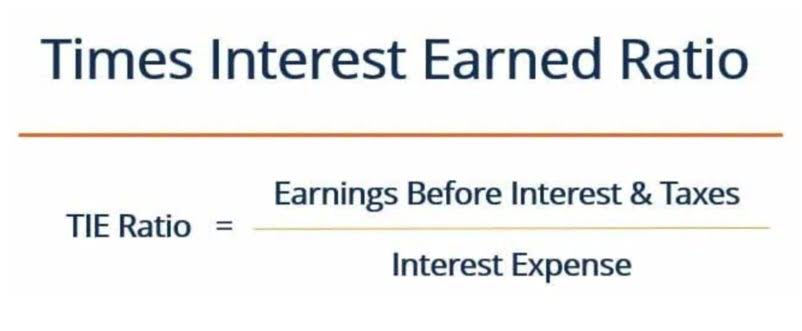The disadvantages of trade credit include high costs if payments are not made on time. Costs usually appear in the form of late-payment penalty charges or interest charges on the outstanding debt. If payments are not made, this can also negatively impact the credit profile of your business as well as the relationship with your supplier.
Ready to grow your Business with Mondu?
A percentage discount is applied if payment is made before the date agreed to in the terms. Trade credit has a significant impact on the financing of businesses and is therefore linked to other financing terms and concepts. Other important terms that affect business financing are credit rating, trade line, and buyer’s credit. The 2022 Small Business Credit Survey finds that trade credit finance is the third most popular financing tool used by small businesses with 9% of businesses reporting that they utilize it.
Impact on supplier relationships
Buyer’s credit is related to international trade and is essentially a loan given to specifically finance the purchase of capital goods and services. Buyer’s credit involves different agencies across borders and typically has a minimum loan amount of several million dollars. Your credit utilization ratio reflects how much of your available credit you’re currently using. If you want good credit, try to keep your credit utilization below 30 percent of your available credit. If you have $10,000 in available credit, for example, try not to let your total credit card balances exceed $3,000. If your credit card balances go past that 30 percent mark, pay them off as quickly as possible.
Pros of Extending Trade Credit:
Credit reports from agencies like Dun & Bradstreet include trade credit terms in scoring. And like your ninth-grade algebra teacher, business credit doesn’t tolerate procrastinators too well. By finding opportunities to build credit now, no matter how small, your business slowly but steadily gains access to other types of financing and higher credit limits. Not all B2B vendors check new customers’ credit before entering into a trade credit relationship. This being said, however, it’s a good idea to do so—especially when you’re considering a very large account.
Improved Cash Flow Management:
- The company’s assets increase but cash does not need to be paid until some time in the future and no interest is charged during the repayment period.
- This means if you have excellent credit or perfect credit, you also have good credit by default.
- This being said, however, you might also find yourself in the opposite situation.
- You should check the laws that apply to your contract before setting your payment terms.
It allows businesses to obtain the necessary resources to operate and grow without the need for immediate cash payments. Missed deadlines and late payments can quickly damage the buyer’s credit rating. This can have implications when the business seeks future financing options, such as small business loans. A poor credit rating may increase the amount of interest charged or even hinder the ability to secure a loan.
While COVID-19 put the world on pause for 2 years, some positive advances in the B2B space emerged. The BNPL B2C model is making its way over to B2B and now, more and more business customers are expecting an experience akin to their B2C purchases. In a consignment arrangement, the supplier delivers goods to the buyer but retains ownership until the goods are sold.
You won’t want to visit your nearest branch on a whim, though, as some banks do not offer exchanges. Here’s everything you need to know about exchanging currency — from where you can go to what you’ll need to place an order. You can choose to take the standard deduction offered to every taxpayer (for a single filer, it’s $12,950 for 2022 and $13,850 in 2023), or you can itemize your deductions. It’s one or the other, so be sure to consider whether individual deductions could save you more than the standard deduction before preparing your taxes.
That way, those high balances will have less of an opportunity to lower your credit score. When you’re at the airport or your destination, you might have a time limit; it’s either right before or during the time you need the new currency. If you exchange your currency before you leave, you’ll have weeks or months to compare rates. You can even use online banks, because you’ll have time to wait for the money to get to you. While you can check exchange rates online to get a rough idea of how much money you’ll need, Jones says online rates do not accurately represent the rates available at financial institutions.
You should always check your client’s credit history or run customer credit checks before contracting with a new client. Trade credit is not expensive for the buyer because there’s no cost involved. But, this arrangement can turn costly if the borrower fails to make the payment by the agreed-upon date. In that case, the borrower will have to pay interest on the outstanding amount.
It empowers companies to navigate uncertainties, seize growth opportunities, and maintain a competitive edge. Community reviews are used to determine product recommendation ratings, but these ratings are not influenced by partner compensation. Julia Kagan is a financial/consumer journalist and former senior editor, personal finance, of Investopedia.
Businesses need to consider how they will fund their activities when starting up as well as their day-to-day operations. Various costs need to be covered, such as equipment, stock and paying bills. Two is thrilled to announce a new partnership with tech-driven global alternative credit asset manager Viola Credit, a https://turbo-tax.org/ leader in financial support and services. This can be partly explained by how familiar B2B buyers are with financial technology. Given 73% of all professional B2B purchasing decisions are made by millennials, the increasing assumption is that B2B companies will offer the same seamless purchasing experience as B2C.
If you have good credit, banks and lenders are more likely to approve your credit applications. This means when you apply for credit cards, loans or mortgages, you’ll be more likely to be accepted and may spend less time waiting to hear the results of your application. Your creditworthiness is defined by your three-digit credit score and is the key to your financial life. Good credit can be the make-or-break detail that determines whether you get a mortgage, car loan or student loan. Bad credit, on the other hand, will make it difficult to get a credit card with a low interest rate and more expensive to borrow money for any purpose.
Our AI-based credit cloud facilitates automated credit reviews and proactive credit risk management, featuring a prioritized credit worklist and AI-driven blocked order management. With our solution, organizations can automatically calculate credit scores, determine risk classes, and establish credit limits using pre-configured credit scoring models. Sometimes, a business might find it challenging to pay back on time because of the short-term nature of trade credit. An important point to note here is that most of the time, the discounted amount is the product’s real value. So, customers availing the whole credit period often pay a small premium for the goods or services. Additionally, a supplier’s credit policy and trade terms influence the overall cost of trade credit for a business.
Trade credit is a benefit to customers that have high inventory costs and challenges, such as the distribution and construction industries . Offering these customers trade credit means you finance their inventory with your working capital. You can find all kinds of companies that offer trade credit, but you might need a business credit score or a certain amount of time as an established business for a deal.
This is where a third party, such as a bank or financial service provider, will quickly pay you 80-90% of the invoice amount upfront, and then collect it from the buyer when the payment terms expire. This alternative provides businesses with quick access to working capital while transferring the collection risk to the financing provider. Accounts receivable financing, also known as trade receivables financing or AR financing, offers a short-term funding method for businesses. It allows them to borrow capital against the value of their accounts receivables. This approach enhances cash flow and enables businesses to continue operations smoothly, even with tied-up capital in receivables. Damaged reputationIf a buyer doesn’t pay their invoice in the allocated term, it’s common for sellers to charge them a late payment fee.
Lenders like to see that you can manage credit accounts responsibly over a long period of time. This is why it’s a bad idea to close old credit cards, even if you’re no longer using them. Your credit report only tracks active credit accounts, and when you shut down your oldest credit accounts, you shorten your credit history. Improved cash flowBeing able to obtain inventory and generate income from the product or service they create before paying for goods is a huge win for sellers. Cash flow is much more easily managed as the term length gives them the opportunity to generate sales and use the profits to settle their debts.
When your business extends credit, customers, particularly those with tight budgets or cash flow constraints, can purchase more goods or services than they might otherwise afford in a single transaction. Banks and credit unions offer immediate cash for business through loans, credit cards, and lines of credit. Trade credit, on the other hand, is when businesses offer other business products or services with specified terms where the buyer pays the cost of those goods at a later date. This could include terms such as a 5% discount on invoices paid within 10 days of issue, for example. One of the major drawbacks suppliers encounter when offering trade credit is the issue of buyers paying late. Depending on the industry, it is common for buyers to delay payments, causing inconvenience and potential cash flow disruptions for suppliers.
The key difference between bank loans and traditional trade credit is simply the barrier of entry. Obtaining a business loan from banks typically involves time-consuming paperwork and checks. In contrast, trade credit is provided by suppliers directly to their customers when needed, without any exchange of collateral or interest rates. One advantage is that it allows B2B buyers to secure a product or service, manufacture what they need and then make a profit – all before making a payment. Trade credit is a type of short-term financing provided by suppliers to their customers and is often the simplest source of short-term borrowing for many businesses. It’s an arrangement where suppliers allow customers to purchase goods or services on credit, with payment due at a later date.
Landlords, insurers and employers frequently use credit information as a litmus test to see if the people they’re dealing with are reliable and responsible. If you want to get a mortgage for a house or a student loan to pay for college—or if you just want to charge your lunch on a credit card—you’re going to need a lender to extend you a line of credit. Generally, you’ll want to exchange currency before arriving in the country you’re traveling to.
Invoice financing can give you immediate access to up to 85% of your invoices’ value, with the other 10%-15% held in reserve until your customers pay their invoices. No matter how cautious or diligent you may be, the near inevitability of late-paying customers in the B2B sector means that you might eventually end up with cash flow issues. Once again, a cash flow issue can quickly lead to you missing payments with your vendors, which is exactly why late payments are so common between B2B suppliers and their customers. When you’re relying on trade credit that comes with early payment discounts or interest-bearing terms, every day that you hold onto unused raw materials or unsold inventory is costing your business money. Therefore, you’ll want to keep an eye on your inventory management process, and look for bottlenecks that could be adjusted to reduce your trade credit costs. If your business is the one extending trade credit, these discounts are certainly advantageous—as they encourage your customers to pay you back promptly.
This gives rise to a long-term business between both the seller and the buyer. In the trade credit arrangement, buyers can buy goods from the seller and delay the payment. This allows the buyer to utilize the funds in other major operations and growth strategies. Trade Credit is a B2B agreement where the customer can buy goods and services from the seller without paying in cash upfront. Both the parties then enter into an agreement where the buyer is reliable to pay at a scheduled date fixed mutually by both parties.
In such a case, the seller will have to bear the loss by adjusting the book. Trade credit accounting means how a company manages the arrangement of buying and selling when it gives time to the other party for payment. This process can also become complicated with accrual accounting, where the transaction is recorded when it happens and not when the money is received.
Setting up a trade credit line with dependable suppliers can be an excellent way to build business credit and more conveniently manage company finances. But be sure you’re ready to meet payment dates on time or you could do your business more harm than good. You might also hear these deals called supplier’s credit, supplier financing, or mercantile credit, which mean the same thing as trade credit. The term business credit mostly refers to a business’s credit score, however. You want to make sure that customers know when payments are due, and that penalties for failure to follow those policies are enforced.
In addition to having higher credit approval rates, people with good credit are often offered lower interest rates. Paying less interest on your debt can save you a lot of money over time, which is why building your credit score is one of the smartest financial moves you can make. These financial institutions are also featured in our guides for the best banks and the best credit unions. Keep in advantages of trade credit mind most banks or credit unions require you to be a customer to exchange currency. Refundable tax credits are the most beneficial because once they reduce tax liability to $0, the taxpayer receives a refund for any remaining amount of the tax credit. You won’t be able to make the most of nonrefundable tax credits that reduce the amount of taxes you owe to zero and still have dollars left over.
Trade credit is a great financial tool offering benefits like enhanced cash flow and increased sales while posing challenges like potential costs for late payments. Managing this arrangement can involve meticulous accounting and understanding the buyer’s perspective. Credlix introduces innovative solutions to simplify managing and leveraging credit arrangements.
One way to obtain a credit commitment from a customer before the goods are delivered is through a commercial draft. The selling firm typically writes a commercial draft calling for the customer to pay a specific amount by a specified date. The draft is then sent to the customer’s bank along with the shipping invoices. To maximize the benefits, both sellers and buyers should adhere to best practices. Let’s explore some guidelines to make the most out of trade credit arrangements. Suppliers may choose to discontinue working with a buyer who consistently struggles with payment.
Tax deductions differ from tax credits in that they reduce taxable income, not the amount of an individual’s tax liability. Other than creating needless cash flow problems, this means B2B sales suffer. Operational complexityManaging invoices in-house requires time and effort and unless you have a dedicated team to deal with this, you’ll find a lot of your time can be spent organising paperwork. This means manually filling out invoices, sending them to your buyers, and reconciling payments. When it comes to the advantages of trade credit, buyers get plenty of perks, and Sellers aren’t left behind either. Trade credit helps build solid, long-lasting partnerships, encouraging both parties to work together.
One example is the American Opportunity Tax Credit (AOTC) for postsecondary education students. Certain types of tax credits are granted to individuals or businesses in specific locations, classifications, or industries. Two’s Order Creator makes it simple to offer invoice purchases to all B2B customers, because sales don’t just happen in one place. Capture offline sales and get paid upfront by harnessing the total power of Two for all B2B sales.
Trade credit is a very convenient way for businesses, especially small businesses, to fund their purchases without having to take on the burden of applying for traditional loans from banks. Instead, buyers can defer payment for a period of time without the extra burden of paying hefty interest. The advantages of trade credit for buyers include simple and easy access to financing. It is also an affordable type of financing that comes at no extra cost when compared to other means of financing, such as a loan from a bank. Every time you apply for a new line of credit, the bank or lender conducts an inquiry into your credit history.






